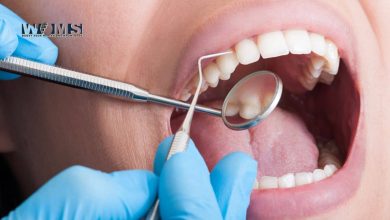How Long Does It Take to Enter the State of Ketosis and Keto Adaptation?

If you’ve ever studied or tried the keto diet, you’ve probably come across the term ketone. Ketones are an energy source that is naturally created in the body when fat is melted. But in addition to marking the process of pumping fat to create energy, ketones are also associated with increased endurance and the treatment of various medical conditions, such as epilepsy.
Ketosis is a condition of increased ketone levels in the blood, which is usually calculated above a level of 0.5 mM. But how do ketones end up in the bloodstream?
Ketones are naturally produced in the body in a state of intermittent fasting or during the implementation of a low-carbohydrate, high-fat diet. In these two cases, the organism becomes ketogenic, i.e., it begins to produce ketones.
It takes several days to enter the state of ketosis, but this information is individual. Some need 1-2 days, while some need more days.
How to recognize the state of ketosis?
Ketosis is best confirmed by a test. There are several ways to test beta-hydroxybutyrate (BHB), the predominant ketone body found in the body.
The most accurate is a blood test in which ketone markers are checked. Ketosis is confirmed in the case of a range of BHB in the blood of 0.5-3.0 mM. To perform the test, you should draw blood from a finger. This test is the most reliable but not the most practical.
Ketones can also be measured with a device for measuring ketones from the breath and urine keto strips. These methods are sufficient to estimate the average ketone level, are less accurate than blood measurements, and are less reliable in the case of severely elevated ketone levels after long-term implementation of the keto diet.
However, testing with keto strips is the most common and economical and is advised to all beginners in the keto diet who will thus very easily know whether they have entered a state of ketosis or not.
How long does it take to enter the state of ketosis?
The answer to this question depends primarily on the individual characteristics of each individual but also on the method by which the person plans to achieve ketosis.
Ketogenic diet
A ketogenic diet is a diet based on high fat intake, and carbohydrate intake is below 10% of total daily food intake. As the reaction to a non-ketogenic diet is different, some take weeks to enter a state of ketosis but must achieve this after 2-4 days of low-carb, high fat ketogenic diet when blood ketone levels rise to about 1-2 mM.
Intermittent fasting
Intermittent fasting is a very effective and easy way to lose extra pounds, reduce the amount of fat in the body and improve general health. During the fasting period, the body relies on fat stores for energy production, and part of that fat is converted into ketones, which increases the level of ketone bodies in the blood.
Intermittent fasting comes in several forms, but the most famous is the 18: 6 one, in which no food is consumed at 6 pm, only water is drunk, and meals are eaten at 6 am. Another popular form of fasting is the 24-hour fast that is performed once a week.
Fasting for 12-16 hours can achieve a state of low ketosis, but a 48-hour fast can raise ketone levels by about 20 times and reach 1-2 mM.
Fat fasting
Before you get to understand what is fat fasting, you should know that this kind of diet can be maintained only for 2-5 days. It is a diet where you eat 1000-1200 calories daily, out of which 80-90% should be fat.
Usually, it is used by people who follow the keto diet, and it helps them to break weight loss plateaus or come back into ketosis fast after a cheat day.
How is keto-adaptation achieved?
Keto adaptation is a set of complex metabolic processes that lead to the transition in the body from the primary use of glucose to create energy to the use of ketones from fats.
Entering a state of ketosis does not mean that the body has achieved maximum use of ketones – it takes more than a few days for the body to adapt to the use of adipose tissue and ketones as the predominant fuel for energy production.
The results of the keto-adaptation are as follows:
Increased fat utilization
In the state of keto-adaptation, the body makes increased use of adipose tissue to produce energy during training. Some studies show that athletes on a keto diet melt twice the amount of fat compared to athletes who are on a diet that contains carbohydrates.
Preservation of glycogen stores
It is a misconception to think that glycogen stores are depleted in cases of implementing a diet with a reduced carbohydrate content.
Studies confirm that athletes who are on a keto diet have the same glycogen stores as those who have carbohydrates in their diet. Namely, after some time, the body gets used to producing carbohydrates through the process of gluconeogenesis and keeping glycogen stores stable.
Improved cognitive functions
For proper functioning, the brain needs either glucose or ketones, not fats. During ketosis, other tissues adapt to use fatty acids for energy production. This process preserves ketones for the brain but also prevents the breakdown of protein and glucose production.
At the beginning of the keto diet, muscle cells use both ketones and fatty acids for energy. But when keto-adaptation occurs, muscles begin to use fatty acids for fuel. This turnaround takes weeks and sometimes months.
Increased energy levels
Animal studies show that the keto diet stimulates the production of new mitochondria. It is in the mitochondria that the conversion of fuel into energy takes place, and an increased number of mitochondria consequently means more energy.
Ketones are used in mitochondria for energy production, which produces much less free radicals than in the case of using glucose to create energy. In addition, ketones themselves cause a decrease in the production of free radicals and increase glutathione levels, which protect against mitochondrial damage from small free radicals.
In the state of ketosis, increased mitochondrial production and reduced mitochondrial damage lead to higher mitochondrial density. In muscles, this adaptation occurs after 3-4 weeks in a state of ketosis.
Conclusion
The time to get into ketosis depends on a number of parameters. Some will enter a state of ketosis after 18 hours of fasting, and some will need a few days. Also, to achieve a keto-adaptation, some will need a week or a little more, others a month will not be enough.
To achieve the best results, you must approach a ketogenic diet focused, disciplined and patient, and the results will come by themselves. Proper diet and regular physical activity are certainly the perfect combinations that will lead to the realization of your keto goals.


